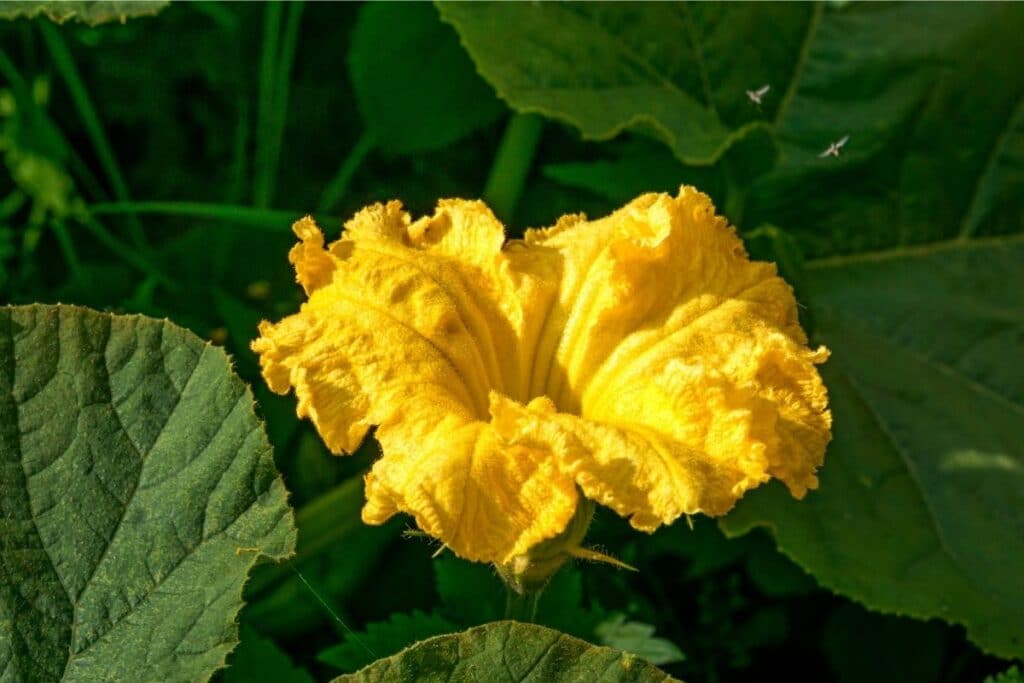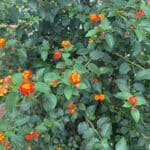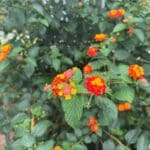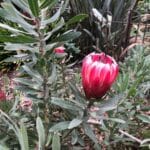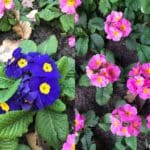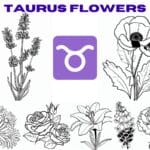Pumpkins are a popular fall crop that find their way into foods such as soup, pie, and other desserts as well as decorations. What many people don’t realize is that the flowers of the pumpkin plant are useful as well and can also be used in edible dishes for your holiday meals.
Pumpkin flowers serve more of a purpose than just an extra part of the plant that we can consume—they are vital to the pumpkin plant and pumpkin fruit as well. These multi-purpose flowers are often overlooked, but they may be one of the most impressive parts of the plant.
Do Pumpkin Flowers Turn Into Pumpkins?
Plants that produce fruit grow flowers that, when fertilized, grow and transform into the fruit of the plant. The same goes for the pumpkin plant, although not all of the flowers have this ability.
Pumpkin plants grow both male and female flowers, and only the female flowers can turn into pumpkins. The male flowers generally grow first and are responsible for creating the pollen that fertilizes the female pumpkin flowers.
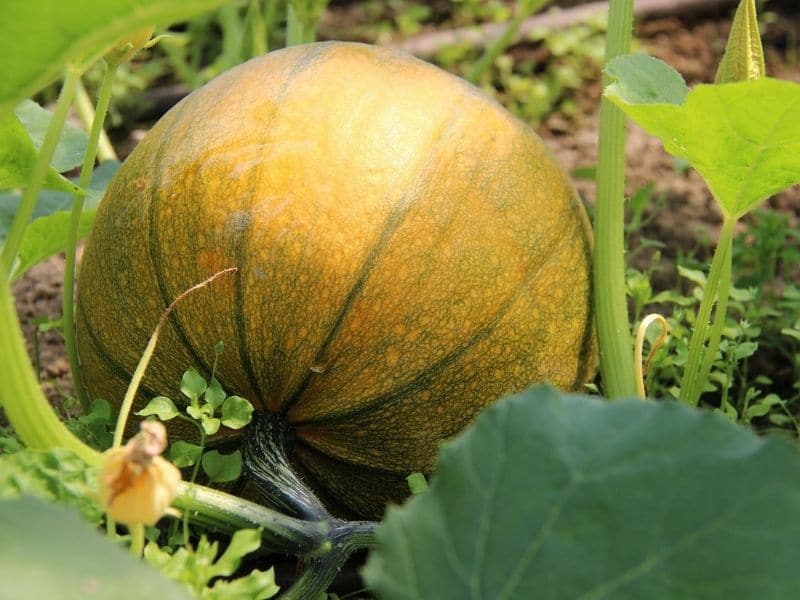
You will generally see more male flowers than female flowers growing on your pumpkin plant, especially for the first few weeks.
Once you start to see your first male flowers growing, expect to see female flowers popping up approximately a week later.
The female flowers, if pollinated, can grow into the pumpkins that we know and love. In addition to being pollinated, the conditions must be ideal for the flower to transform into a fruit.
Pumpkin flowers are a little bit picky when it comes to growing conditions, but a healthy plant should be able to grow plenty of pumpkins.
How Can You Distinguish Between the Male and Female Flowers?
From the naked eye, there is little difference between male and female flowers. The main thing to watch for is a slight bulge at the base of the flower head.
If there is a bulge, you are probably looking at a female flower. This bulge is the part of the flower that will grow into a pumpkin if fertilized and cared for properly.
If your flower does not have a bulge towards the base, you probably have a male flower.
From a biological view, there are more differences to be found between the males and females as with any species.
To name a few, the female flowers have an ovary and a long stigma, which is the part of the flower responsible for pollen germination. The male flowers do not have these parts and instead have stamens which produce pollen for reproduction.
Female flowers actually have stamens as well, although they do not produce pollen that is functional.
Should I Remove Pumpkin Flowers?
The decision to remove pumpkin flowers depends on your gardening goals. If you want to encourage a larger pumpkin harvest, it’s recommended to leave the female flowers on the plant, as these develop into pumpkins. However, removing some male flowers can be beneficial, redirecting energy toward fewer fruits for potentially larger pumpkins.
If you’re growing pumpkins primarily for culinary purposes and wish to enjoy stuffed or fried pumpkin flowers, you may selectively harvest some male flowers while leaving enough to ensure pollination for fruit development.
Regular removal of spent flowers, both male and female, can also encourage continuous blooming throughout the growing season.
Can You Eat Pumpkin Flowers?
Pumpkins aren’t the only edible things that come from pumpkin vines—you can eat the flowers too! In fact, pumpkin flowers are found in a number of popular dishes around the world, particularly in southern India.
Although it would be perfectly safe to eat a pumpkin flower straight from the healthy vines—assuming it’s clean—most people use them to cook with and add to dishes.
Some popular uses are in soup, salads, salad dressing, teas, fritters, and with rice.
With such a wide variety of uses, there are bound to be some meals you know that could benefit from some pumpkin flowers—it may be worth a try!
What Do Pumpkin Flowers Taste Like?
Pumpkin flowers are said to have a garden green taste that is subtly sweet, like a pumpkin. Pumpkins are a member of the squash family, and the taste has been compared to that of squash as well.
Different individuals can interpret the same taste differently, so there is some disagreement on the exact taste—I guess you’ll have to try it yourself!
Some pumpkin flower growers claim that the male flowers have a stronger taste than female flowers. The males’ flowers are also said to be easier for eating because they do not have the ovary bulge growing at the base, meaning there is more of the flower that you can eat.
When eating a female pumpkin flower, it is best to cut out the ovary section. Although it is edible, it is generally avoided due to its toughness—and it doesn’t sound very appetizing.
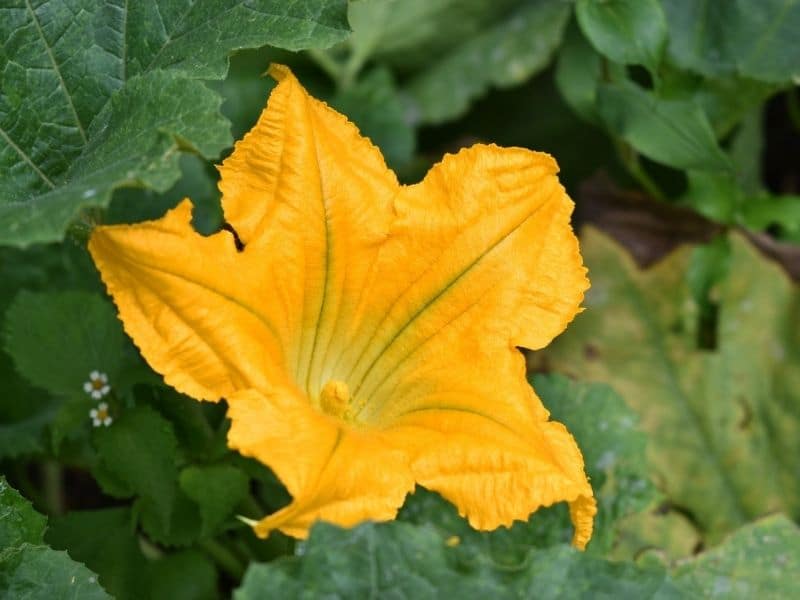
What Do Pumpkin Flowers Look Like?
When pumpkin flowers are in bloom, they add a nice pop of color to your garden. These flowers are approximately four to five inches across and only come in one color – yellow – with 5 petals.
The yellow coloration is bright and will catch your eye when you look outside When opened up, the petals form the shape of a star—with the color to match!
Do Pumpkin Flowers Have Health Benefits?
Yes, pumpkin flowers do have several potential health benefits! They are a good source of vitamins A, C, and B9, as well as minerals like magnesium, potassium, and iron. Additionally, they contain antioxidants and anti-inflammatory compounds.
Some studies suggest that pumpkin flowers may help boost the immune system, improve vision, and promote heart health.
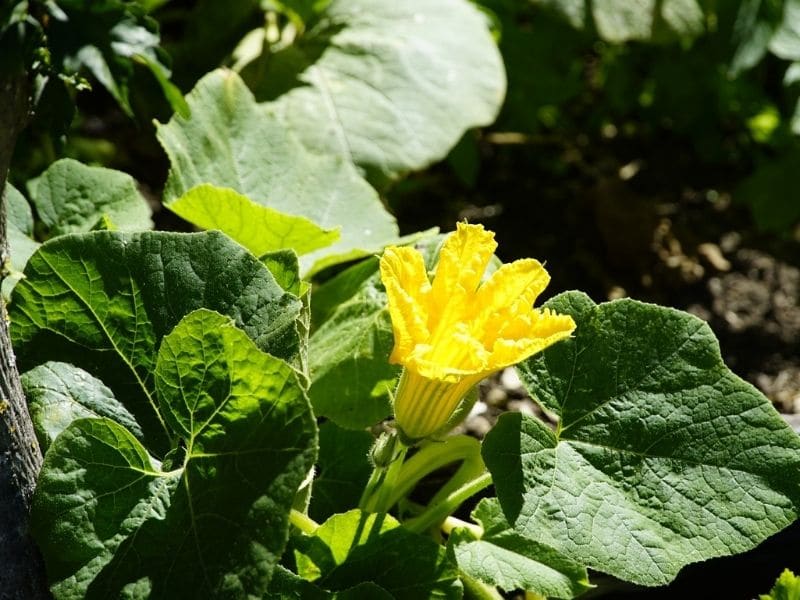
When Do Pumpkin Flowers Start Showing Up?
You will start to see your pumpkin flowers approximately six to eight weeks after your pumpkin plant has sprouted—this is when the plant is mature enough to start growing pumpkins.
The first flowers to show up will almost always be male flowers. In fact, the whole first weeks’ worth of flowers will most likely all be male flowers.These flowers bloom from mid-June to early July on the usual ready-for-fall growth cycle.
After the first week of blooms, you will start to see female flowers as well. Overall, you will probably see more male flowers than female flowers—this stays consistent throughout the life of the plant.
How Long Do Pumpkin Flowers Last?
Pumpkin flowers are short-lived, typically lasting only for a day or two once fully open. To maximize their freshness and culinary potential, it’s advisable to harvest and use them promptly after they bloom.
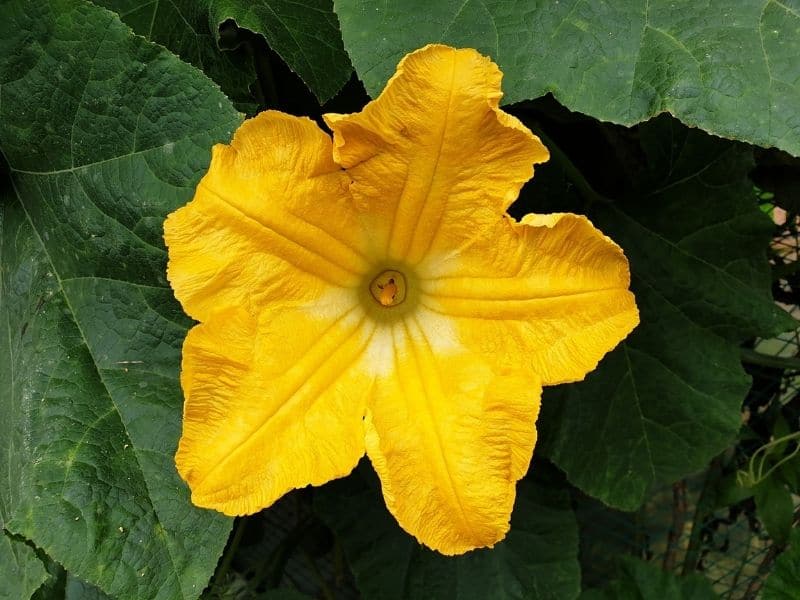
How Do You Pollinate Pumpkin Flowers?
Pumpkin flowers require pollination, just like any other plant. The most common—and easiest—way that pumpkin flowers get pollinated is from pollinators like bees.
To encourage pollinators to come and do their jobs, you can plant other plants nearby that attract them such as lavender, asters, peonies, and lilacs. Not only will these flowers attract pollinators, but you will also have beautiful flowers to look at, and most have a good fragrance as well.
You may physically try your hand at successful pollination. Hand pollination could be the best option. Hand pollinate a female flower that is about to blossom before 10 a.m.
How Do You Harvest Pumpkin Flowers?
To harvest pumpkin flowers, wait until they are fully open in the morning when pollen is abundant. Identify the male and female flowers—the males have a slender stem, while the females have a small, immature pumpkin at their base.
Gently pluck the male flowers, as they do not produce fruit, and can be used in cooking. If you’re harvesting female flowers for culinary purposes, leave a few on the plant to ensure a good pumpkin harvest. Use the harvested flowers promptly, as they are delicate and best enjoyed fresh.
Don’t forget to check other tree with yellow flowers on our blog. They’re beautiful!
See more:
- How to Keep Squirrels Away from Pumpkins
- Pumpkin Leaves Turning Yellow? Solutions for Healthy Plants
- Do Deer Eat Pumpkins?
*featured photo by Obraz/depositphotos

